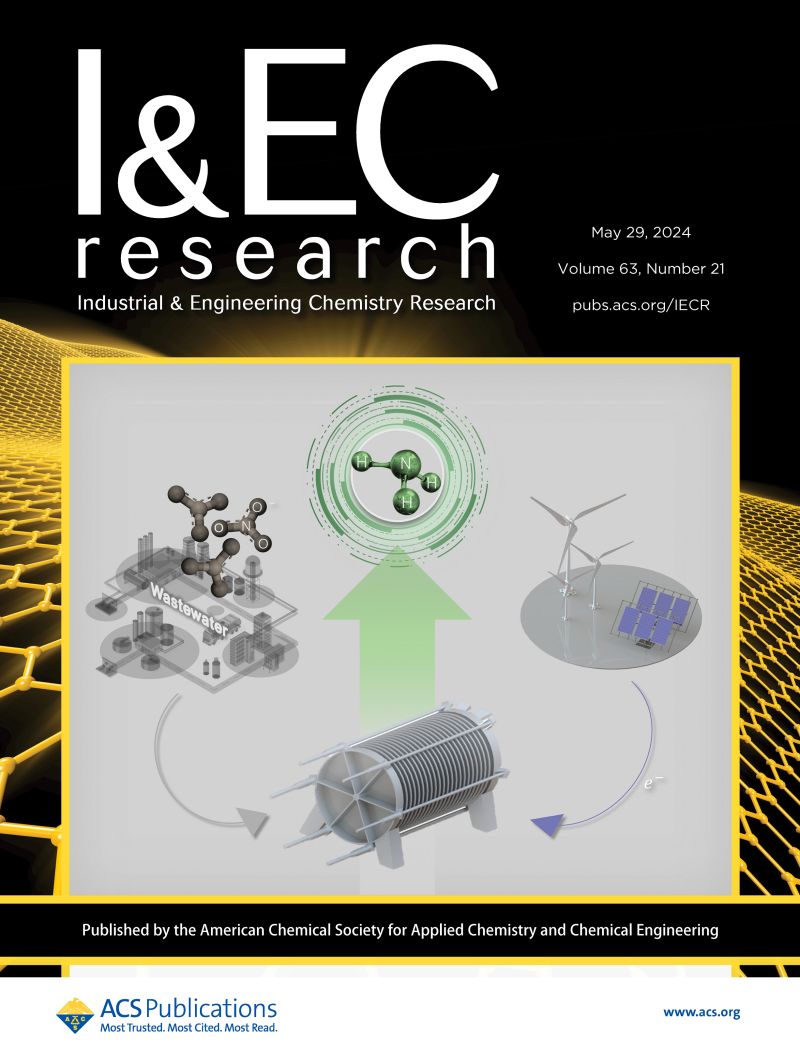IF 3.8
3区 工程技术
Q2 ENGINEERING, CHEMICAL
引用次数: 0
摘要
工业化导致二氧化碳(CO2)排放量迅速增加,引发了一系列环境问题,对人类健康造成了严重威胁。在碳捕集、利用和封存(CCUS)过程中,利用非热等离子体技术将二氧化碳转化为高附加值燃料和化学品具有重大优势,使反应能够在温和的条件下进行。本综述探讨了过去十年间利用介质阻挡放电(DBD)等离子催化技术将二氧化碳转化为高附加值产品所取得的进展。文章概述了 DBD 等离子设备的特点,并重点介绍了在 DBD 等离子和催化剂的协同作用下将 CO2 转化为 CH3OH、CH4 和 CO 的进展。讨论主要集中在各种催化剂类型对反应转化效率和产品选择性的影响上。研究表明,DBD 等离子体技术与催化剂的结合可进一步提高二氧化碳的转化效率和产品选择性。Cu 基、Ni 基和 Mn 基催化剂分别是合成 CH3OH、CH4 和 CO 最常用的金属催化剂。最后,还指出了该技术面临的主要挑战和未来的研究方向,为未来的工业应用提供了宝贵的启示。本文章由计算机程序翻译,如有差异,请以英文原文为准。

Research Progress in DBD Plasma-Catalyzed CO2 Conversion
The rapid increase in carbon dioxide (CO2) emissions caused by industrialization has triggered a cascade of environmental issues, posing significant threats to human health. In the Carbon Capture, Utilization, and Storage (CCUS) process, the utilization of nonthermal plasma technology to convert CO2 into high-value-added fuels and chemicals offers major advantages, enabling the reaction to proceed under mild conditions. This review examines the advancements made over the past decade in the conversion of CO2 into high-value products using dielectric barrier discharge (DBD) plasma-catalytic technology. The characteristics of DBD plasma devices are outlined, and progress in CO2 conversion to CH3OH, CH4, and CO under the synergistic effects of DBD plasma and catalysts is highlighted. The discussion primarily focuses on the influence of various catalyst types on reaction conversion efficiency and product selectivity. Studies have shown that the combination of DBD plasma technology with catalysts further enhances CO2 conversion efficiency and product selectivity. Cu-based, Ni-based, and Mn-based catalysts are the most commonly used metal catalysts for the synthesis of CH3OH, CH4, and CO, respectively. Finally, the main challenges and future research directions for this technology are identified, providing valuable insights for future industrial applications.
求助全文
通过发布文献求助,成功后即可免费获取论文全文。
去求助
来源期刊

Industrial & Engineering Chemistry Research
工程技术-工程:化工
CiteScore
7.40
自引率
7.10%
发文量
1467
审稿时长
2.8 months
期刊介绍:
ndustrial & Engineering Chemistry, with variations in title and format, has been published since 1909 by the American Chemical Society. Industrial & Engineering Chemistry Research is a weekly publication that reports industrial and academic research in the broad fields of applied chemistry and chemical engineering with special focus on fundamentals, processes, and products.
 求助内容:
求助内容: 应助结果提醒方式:
应助结果提醒方式:


